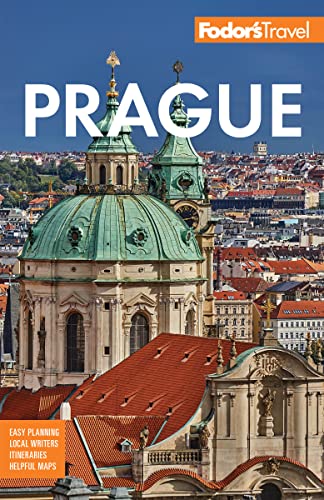Top Prague Attractions
Pražský Hrad (Prague Castle)
The nation’s most-visited site draws more than 1.6 million people per year, and Czech history has been irrevocably deeply intertwined with it from the 10th century onward. Attractions set inside the castle’s imposing walls range from grand churches, manicured gardens, and regal abodes—including the official presidential residence—to the higgledy-piggledy little cottages that prettily line Golden Lane. To set this all in context, it helps to make "The Story of Prague Castle" your first stop. It’s an engaging multimedia display located in the Old Royal Palace.
Chrám svatého Víta (St. Vitus Cathedral)
"The City of a Hundred Spires" has more than its fair share of churches. None, however, can top this glorious Gothic structure on the grounds of Prague Castle. Almost six centuries in the making (the cornerstone was laid in 1344, and work was finally completed in 1929), St. Vitus is a place of superlatives. It is both the largest church in the Czech Republic and—as the country's spiritual center and the final resting place for many of its beloved kings and saints—the most important.
Karluv most (The Charles Bridge)
When it was built in the mid-14th century, Europe’s longest medieval bridge (a 1,700-foot span supported by 16 graceful arches) was an engineering triumph, and it remained the only boat-free way to cross the Vltava until the mid-19th century. Assuming that you can navigate through the crowds, it is still a convenient way to get from Staré Město to Malá Strana. Being studded by statues on both sides, it’s also a veritable gallery, and a magnet for romantics, history buffs, buskers, and tourists.
Staromestské námestí (Old Town Square)
Dating back to the Middle Ages, this massive town-square-cum-marketplace in the heart of Staré Město is rimmed with postcard-perfect sites. The most striking of these—quite literally—is the Astronomical Clock on the Old Town Hall tower, which marked its 600th birthday in 2010. Operating like a giant cuckoo clock, its meticulously carved wooden figures of the Twelve Apostles appear on the top of the hour from 9 am to 11 pm. One legend has it that local officials were so impressed by the mechanical marvel that they blinded the clockmaker to ensure that he could never duplicate it.
Židovské muzeum (The Jewish Museum)
Rather than being a single bricks-and-mortar building, this museum is made up of six sites in the Josefov district. These include a Ceremonial Hall as well as four historic synagogues that house themed exhibits. The Pinkasova, with its Holocaust memorial, is most moving: the names of 77,297 Czech Jews murdered by the Nazis are inscribed on the main-floor walls, while impossibly poignant drawings made by children at the Terezín "transit" camp are displayed in its gallery. The museum also administers the Old Jewish Cemetery, which contains some 12,000 tilting headstones.
Chrám svatého Mikuláse (Church of St. Nicholas)
Not to be confused with the 18th-century edifice in Staré Město that is dedicated to the same saint, this domed beauty dominates the Malá Strana district. A prime example of "high baroque," its extravagant interior features a gilded statue of St. Nick plus frescos depicting his life in addition to the usual paintings and putti. The church also hosts evening concerts from late March through early November, and again in the Christmas season (most showcase the music of Mozart, who himself played the organ here). Those who prefer the sound of pealing bells are welcome to climb the adjacent bell tower.
Obecní dům (Municipal House)
Prague is a compendium of architectural styles, and the remarkable range inevitably draws stares. For fans of art nouveau, though, this building takes the cake. Municipal House was built with nationalist zeal when the Austro-Hungarian Empire was waning. So it is no coincidence that the era’s preeminent Czech artists were hired to decorate it, or that the main concert venue (Smetana Hall, home to the Prague Symphony Orchestra) was named for the "Father of Czech Music." Fittingly, the Republic of Czechoslovakia declared its independence from the balcony of Obecní dům in 1918.
Chrám svaté Barbory (St. Barbara's Cathedral)
"Heigh-Ho, Heigh-Ho, it’s off to church we go" could have been the theme song for the silver miners of Kutná Hora who financed the building of this grand cathedral to honor their patron saint. Like St. Vitus Cathedral (aesthetically, its only rival), St. Barbara’s was for centuries a work in progress: construction went on intermittently from 1388 to 1905. What makes this church so unusual, though, is the way metallurgy and liturgy intersect inside. Paying homage to both the blue collar and the clerical collar, it contains frescoes portraying both religious scenes and scenes of mining and minting.




